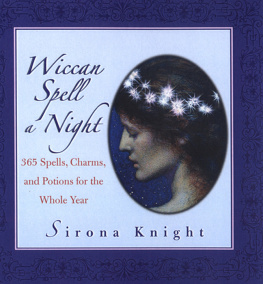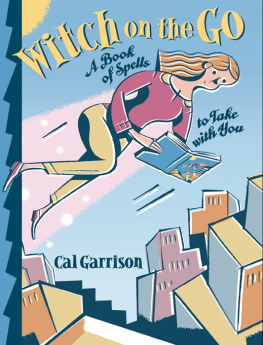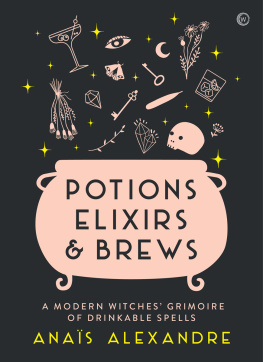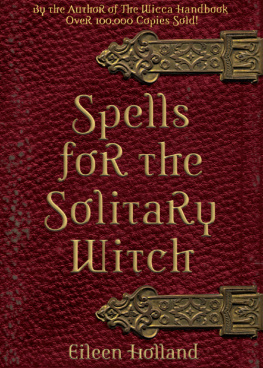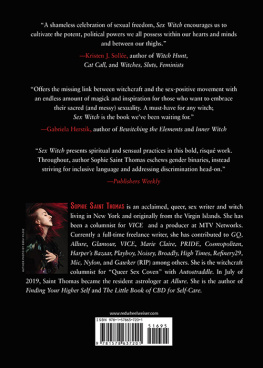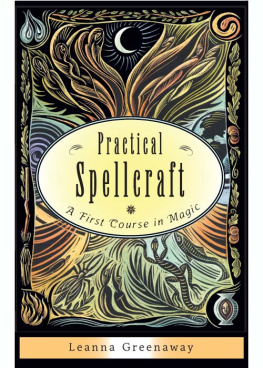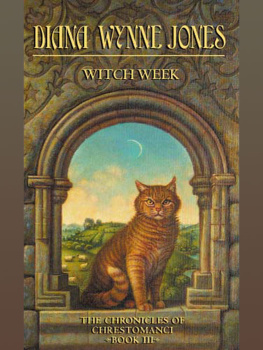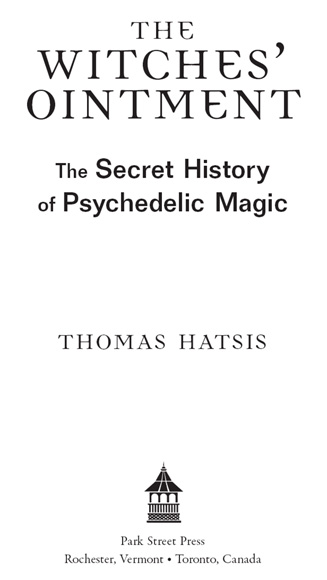
THE
WITCHES
OINTMENT

The Witches Ointment is, remarkably, the first full-length treatment of a topic that is central to our understanding of European witchcraft. Did the witches use psychoactive substances or not? This has long been debated but often on the basis of prejudice or inadequate information. We are fortunate that Hatsis has written an authoritative account, drawing deeply on primary sources and pursuing original lines of thought. Entertaining and highly readable, this book seems destined to be the definitive work on the subject. No doubt it will inspire others to see the witch cult in a new light. Highly recommended to all those who are interested in witchcraft, the history of drugs, and the more unusual byways of culture. A fascinating book.
RICHARD RUDGLEY, AUTHOR OFPAGAN RESURRECTION AND THE ENCYCLOPEDIA OF PSYCHOACTIVE SUBSTANCES
This wonderful book brews up a heady potion of folk herbs and psychedelics to intoxicate the conspiracy theorists and passionate disbelievers alike. With his objectivity and beautiful writing, Hatsis shines a light on the destructive Christocentric misogyny of the medieval world, whose holistic pagan medicine was certainly no more diabolical than our own modern Pharma Industry.
BEN SESSA, MBBS, MRCPSYCH, AUTHOR OF THE PSYCHEDELIC RENAISSANCE
Tales of witches and toads, broomsticks and belladonnadocumented herein are the exotic herbal potions and demonic flights of fancy that terrified and confounded the religious authorities of the Middle Ages. Exquisitely written and meticulously researched, Hatsis clears the supernatural mists of yore and roots out the various psychoactive agents lying at the heart of European witchcraft. A remarkably informative and wholly compelling read!
SIMON G. POWELL, AUTHOR OF MAGIC MUSHROOM EXPLORER AND THE PSILOCYBIN SOLUTION
In this remarkable book, Thomas Hatsis reveals the hidden truth behind historys most legendary ointmentsthe medieval bewitching potionsthat supposedly lubricated broomsticks and fueled extracorporeal mystical journeys and hallucinogenic night flights, setting the stage for strange entity encounters and unholy copulations, animal transformations, and miraculous healings as well as diabolical poisonings, dangerous delusional deceptions, and harmful black magic. In this impeccably researched and compulsively readable volume, Hatsis recovers the lost history of these magical medicinal brews and psychoactive formulas that have been hidden for centuries and hinted at in the mythic portrayal of witchcraft and sorcery. Hatsiss scholarly research shines an illuminating spotlight on what is actually known about these visionary (and sometimes deadly) herbal mixes, and he expertly blends his meticulous studies with keen intuition in this uniquely envisioned volume, overflowing with rare historical treasures and fascinating speculations as well as the secret psychedelic ingredients for re-creating the legendary ointments. This book will appeal to anyone interested in herbal folk remedies, entheogenic medicine, the relationship between alchemy and science, and how heretical notions of healing influenced Western religious systems and modern medicine. A few words of caution: history compels you to use this book wisely or you may get burned at the stake!
DAVID JAY BROWN, AUTHOR OF THE NEW SCIENCE OF PSYCHEDELICS AND FRONTIERS OF PSYCHEDELIC CONSCIOUSNESS
ACKNOWLEDGMENTS
No book is written by one person, and this book is no exception. The following people have been instrumental in helping me complete this work:
Mom, I am all out of words at this point, and I only hope you find them within these pages, saying thank you every time a sentence makes you proud of the writer I have become; El Dad, for teaching me the value of education; Stuart Eisbruck, your legal advice has been both appreciated and edifying; Nini and Thomas Humphrey, for your belief in me and help with last-minute research funding for this work, for always knowing how to make me smile on the cloudiest of days; Edward Bever, your research advice and tremendous insight into the field of early modern period witchcraft has been invaluablethis book would not be in the shape its in without your help; Jack Zevin, for the research experience; Simon G. Powell, for your help in getting it all published; the women and men of the WFTDA (Womens Flat Track Roller Derby Association) and MRDA (Mens Roller Derby Association) for keeping me sane (and kinda driving me crazy); and my publisher, Park Street Press, for giving me the chance.
The following people assisted with translations; they are included in citations where appropriate throughout this book, but I would like to thank them here more formally. Carl A. P. Ruck: while we part company in some areas, I appreciate your contributions to this field. I hope you like this one. Elizabeth Timpone: you have been a friend to me for as long as I can remember; thank you for your help with the French. Marie Phillips: who would have thought a banana would need a place to crash in Oxford to conduct research at the Bodleian? Such is derby. Thank you for your French translations, food, hospitality, kindness, and invaluable crash space. Peter Conolly-Smith: for teaching me how to write history. Thank you also to Gerhild Williams and Hannelore Spence for your advice and German translations. Also, a big thank you to Kayla Wing for her last-minute help with German translations as well. See you on the track, friend.
Youre not writing this for the guy whos in the office next to you, youre writing this for your mother.
BART EHRMAN
(COMMENTING ON
THE NATURE OF ACADEMIC WORKS)

FOREWORD
At the conclusion of the formal session titled Cognition and Magic, held at the 2011 Congress of Medieval Studies, informal discussions began, as commonly happens. While I spoke with different people interested in points I had raised in my paper, one of the conference participants came up to me and introduced himself: Thomas Hatsis. He explained excitedly that he was doing research into witches ointments that he thought I would be interested in and invited me to hear his paper during the next round of sessions. I took him up on the invitation and was glad I did. His talk impressed me with its combination of openness and rigor, knowledge of the sources and originality of thought, sophisticated understanding of the established authorities in the field and sophisticated critique of the same. We stayed in touch over the next few years as he researched and wrote and gradually transformed that twenty-minute presentation into this book.
As I watched this transformation I was particularly struck by three things. First of all, Tom was not enrolled in a doctoral program, yet he stuck with this project over the course of years, displaying remarkable perseverance in expanding, deepening, and refining it without the pressures, incentives, or support of a faculty position. His is a labor of love, of passion. Secondly, while Tom writes in an engaging, accessible style, he adheres to rigorous scholarly standards. His discussion is based on an extensive use of primary as well as secondary sources; it pays close attention to detail, context, and interconnections, and it displays a judicious regard for the evidence in drawing conclusions. Third, through his perseverance, rigor, and insight, Tom has produced an important and substantial contribution to the field, one that promises to change the terms of the debate about witches ointments and their role in early modern period witch beliefs.
Next page

